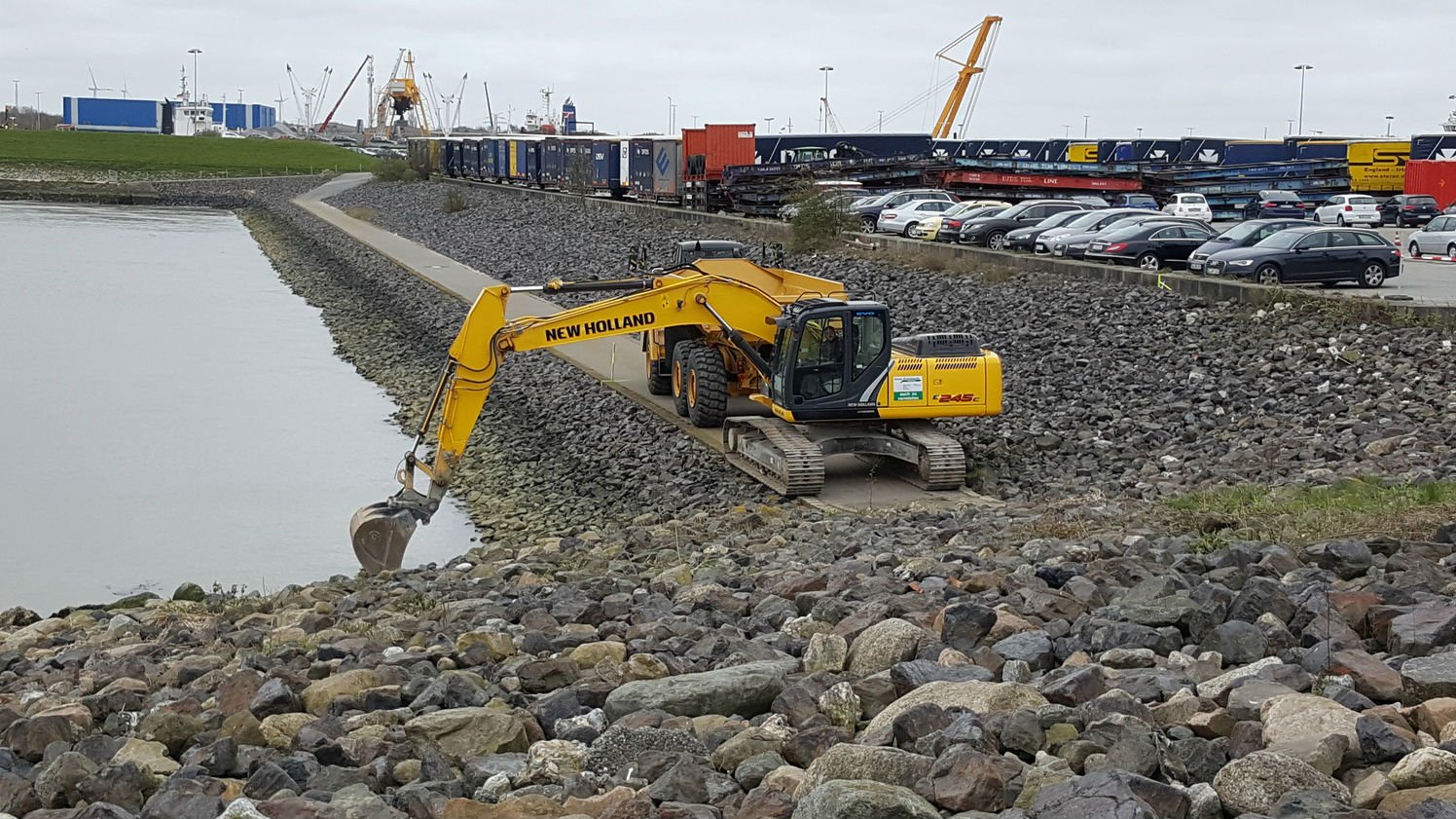Cuxhaven is Ready for Cargo Growth

The forward momentum in Cuxhaven, Germany, continues unabated with the groundbreaking of CuxPort's 240 meter-long Berth 4. Many years of preparation and considerable public subsidies came together on April 22, 2016, to create the new expansion.
All legally possible preparations were done even before governmental approval was issued, said Holger Banik of NPorts. The first investigations, such as Elbe river current analyses, took place in 2006/2007. The end-date for the construction effort is targeted for 2017.
Daniels Behrens of NPorts and of the Lower Saxony Economic Ministry said that Berth 4 is an additional multi-purpose terminal which can provide more capacity both for heavy lift cargo and for automobile transports. As such, Berth 4 joins Berth 8, which is being used by offshore part producer Ambau. The heavy lift cargo aspect will also be of interest to Siemens, which is currently in the process of establishing a production facility in Cuxhaven.
In total, the construction costs will run to roughly 35 million euros ($40 million.) European Union loans are being used to partially finance the project costs. Behrens noted that the next steps for the development of the port of Cuxhaven are the completion of Berths 5, 6 and 7, and that this process will be supported by the German federal government. Later, Ulrich Getsch, mayor of Cuxhaven, pointed out how difficult it can be to explain to Germans living inland why a port is even necessary in Cuxhaven - of course, this makes it harder to get the needed funds.
Lower Saxony State Parliament Representative Uwe Santjer (SPD-Cuxhaven) pointed out in an emotionally charged speech that the development of Cuxhaven as an offshore base port has led to a completely different political narrative. In terms of the future of schools and other public infrastructure, the existence of so many well-paying, relatively secure jobs in manufacturing and the offshore sector means that the environment is substantively more favorable.
.jpg)
Peter Zint (pictured above) took a philosophical view of the situation by noting that everybody present today would win due to the expansion of the port of Cuxhaven. After all, the new construction was a positive signal in an otherwise economically depressed region. Pier 4 was also a clear validation of the efforts of county and state government to push port developments forward; NPorts, as the state-owned port development corporation, would also profit from the smart move. NPorts would be expanding its portfolio by including a heavylift cargo pier which, for many years going forward, would serve its function well.
In this context, Peter Zint noted that the discussion surrounding a reversal of the German Renewable Energies Law was unsettling investors. A secure political framework for offshore projects was just as necessary as having the proper infrastructure available, so that interested customers do not need to be turned away on account of a lack of available port capacity.
.jpg)
The opinions expressed herein are the author's and not necessarily those of The Maritime Executive.
